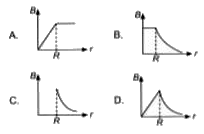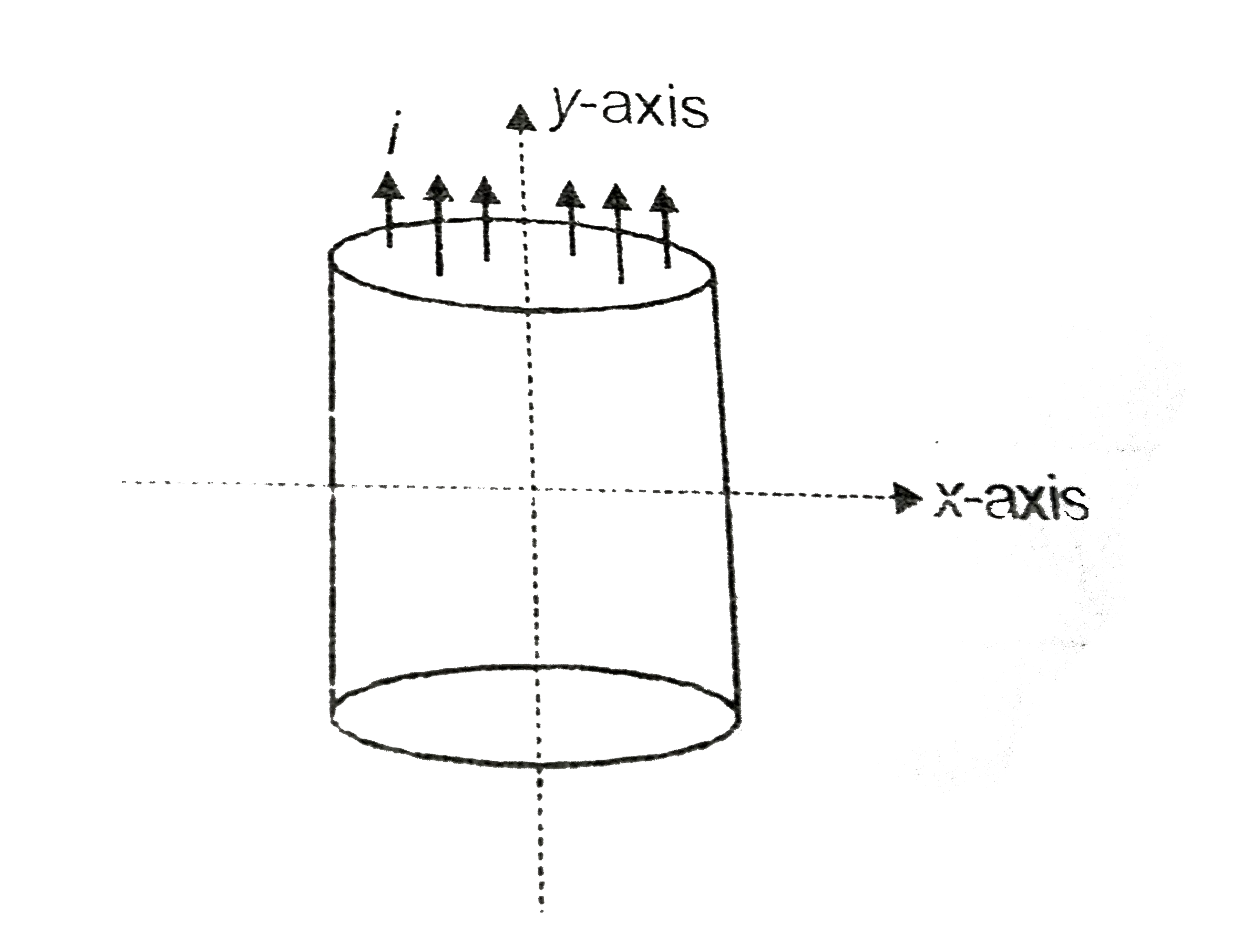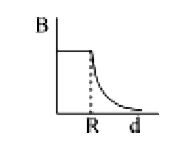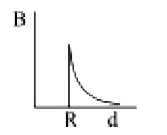A long solid cylindrical conductor of radius R is carrying a constant current I. The variation of magnetic field due to this conductor is given by B=⎧⎨⎩KlrR2r≤Rklrr>R
Here k is a constant and r = distance between the axis of the conductor and the point at which magnetic field is given.
Which of the following plots is correct regarding themagnitude of magnetic field B with disatance ?

The correct Answer is:D
For r≤r,B∝r i.e. plot will be straight line.
For r≤R,B∝1r i.e, plot will be rectangular hyperbola.
Topper's Solved these Questions
Similar Questions
A long cylindrical conductor of cross-sectional area A and radius a is made of material whose resistivity depends only on a distance r from the axis of conductor, given by ρ=cr2, where c is a constant. Find the resistance per unit length of the conductor and the electric field strength due to which a current I flows in it.
View SolutionThe figure shows a long straight current carrying conductor. Can you plot the variation of magnetic field on x-axis ?

View Solution
Knowledge Check
A cylindrical conductor of radius R is carrying a constant current. The plot of the magnitude of the conductor is correctly represented by the figure:
A B
B C
C D
D
The magnetic field near a current carrying conductor is given by
ACoulomb’s lawBLenz’ lawCBiot-savart’s lawDKirchoff’s lawA cylindrical conductor of radius R carrying current i along the axis such that the magnetic field inside the conductor varies as B=B0r2(0<r≤R), then which of the following in incorrect?
ACurrent density at distance 'r' from central axis of the conductor is J(r)=2B0rμ0BCurrent density at distance 'r' from central axis of the conductor is J(r)=3B0rμ0CHalf of the total current would be confined within the radius of R(2)13 of the conductorDFor r>R magnetic field would vary as B(r)=B0R3r
A cylindrical conductor of radius 'R' carries a current 'i'. The value of magnetic field at a point which is R/4 distance inside from the surface is 10T. Find the value of magnetic field at point which is 4R distance outside from the surface
View SolutionA cylindrical conductor of radius R is carrying constant current. The plot of the magnitude of the magnetic field, B with the distance, d from the centre of the conductor , is correctly represented by the figure:
View SolutionA cylindrical conductor of radius R is carrying a constant current. The plot of the magnitude of the magnetic field, B with the distance, d from the centre of the conductor, is correctly represented by the figure
View SolutionA cylinderical conductor of radius R is carrying constant current. The plot of the magnitude of the magnetic field, B with the distance, d from the centre of the conductor , is correctly represented by the figure:
View SolutionThe magnetic field at a distance r from a long wire carryimg current I is 0.4 T. The magnetic field at a distance 2r is
View Solution
